#london midland and scottish railway
Explore tagged Tumblr posts
Text

Poster for the London Midland and Scottish Railway Derby Staff Ball (1931).
#vintage poster#1930s#ball#party#dancing#staff ball#dancers#masquerade#derby staff ball#london midland and scottish railway#lms railway#british
58 notes
·
View notes
Text
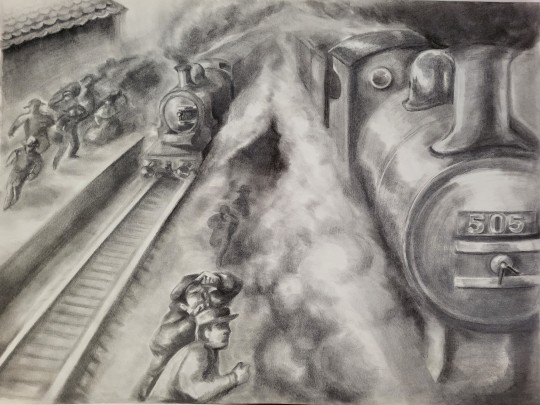
"Runaway on the LMS", 2022, graphite
Close ups:


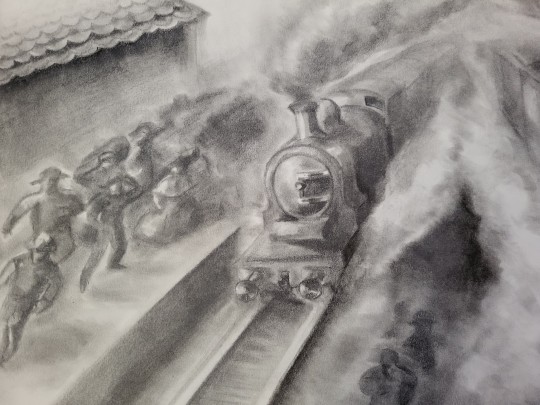
Please do not repost without permission!
#randomly remembered that this existed while i was cleaning my room#and its WAY too good not to post#i worked on it for about 2 weeks maybe 3#and it was for college assignment#the engines have no particular basis but feel free to speculate!!!#humans will always be fucking impossible to shade w graphite istg#real life railway#kips art#art#steam locomotive#london midland and scottish railway#artists on tumblr#traditional art#college artist
230 notes
·
View notes
Photo

Henry, aka the LMS Black 5...who needs an update. Also I need to do more LMS engines.
15 notes
·
View notes
Text


introducing the big four. the main troublemakers. berwyn (GWR) is probably the only one who still has this photo.
ask box is now open as well !
#inbetweenthelines#ibttl4#lner#lms#southern railway#gwr#great western railway#london midland scottish railway#london north eastern railway#ttte#the railway series#railway series#personification#gijinka#thomas the tank engine#thomas and friends#railway#british rail#oc art#digital art
42 notes
·
View notes
Text
Today I Learned there is an animatronic statue of Sir William Stanier at Buttersley Railway Museum with motion sensors

youtube
Great documentary of the man with the animatronic manikin at work. Its a bit unnerving seeing it move though...
#Sir William Stanier#real railways#real life CME#real life Chief Mechanical Engineers#London Midland and Scottish Railways#animatronic puppets#train related#non-rws related#but still related to trains#real railroads#LMS#trains#locomotive design#Youtube
5 notes
·
View notes
Text
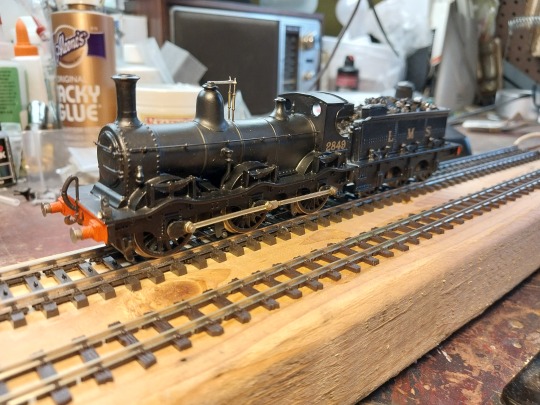
OO Gauge MR 700 Class. Picked it up built, painted and running. No coupler though.
#models#trains#mr#lms#kirtley#700#700class#1f#oogauge#1/76#midlandrailway#london midland scottish railway#kitbuilt
4 notes
·
View notes
Video
British Railways (ex LMS) loco No. 40026 @ St. Albans City Stn. by Frederick McLean Via Flickr: An old photograph of tank locomotive No. 40026 at St. Albans City station. No photographer name or date. This was an H. Fowler designed class 3P, 2-6-2T engine, built at the Derby Works and new to the London, Midland & Scottish Railway (LMS) in Feb 1931, carrying No. 15525, renumbered as 26 in May 1934. In 1948 the railways were nationalised, becoming British Railways (BR), engine No. 26 becoming No. 40026 in Oct 1948. The locomotive was withdrawn from service in Dec 1962, then scrapped in Apr of the following year (location unknown). If there are any errors in the above description please let me know. Thanks. 📷 Any photograph I post on Flickr is an original in my possession, nothing is ever copied/downloaded from another location. 📷 -------------------------------------------------
#LMS#BR#London#Midland and Scottish Railway#London Midland & Scottish#old photograph#old transport#vintage transport#vintage photograph#2-6-2T#tank engine#class 3P#H Fowler#40026#Derby Works#St Albans City#locomotive#old locomotive#steam loco#steam locomotive#vintage steam loco#old train#steam train#vintage train#old steam engine#vintage steam engine#British Railways#railway station#flickr
2 notes
·
View notes
Text

London Midland & Scottish Railway • LMS
Le Meilleur Service de Chemin de Fer Anglais
~ Raymond Virac (French, 1892-1946), circa 1925
10 notes
·
View notes
Text
...of Anoraks, Pufferküsser and Tragics!
A short foreword and explanation: My friend Michael in London has been doing a blog since blogs became a thing. He started out to review, comment on and complain about all things Apple. Hence the blog’s URL: www.macfilos.com. However over the years his obsession with photography and cameras, in particular Leica equipment, became the main focus of his blog. The blog name stayed the same, but it is…
#American 4-4-0#Beecham#Black 5#British Heritage Railways#Flying Scotsman#Great Central Railway#Great Western Mainline#GWR#Isambard Kingdom Brunel#Jacobite Steam Train#Leica#LNER#London Midland Scottish#London Victoria Station#National Railway Museum York#New Freedom#Norfolk and Western#North Norfolk Railway#North Yorkshire Moors Railway#O. Winston Link#Roanoke#Seattle and Carlisle Rail Line#Severn Valley Railway#Sherbourne Christmas Express#Southern Railway (US)#Steam Locomotives#Train Spotters#UK Rail Tours#UK Railtours#Virginia
0 notes
Text

Rail Archive Stephenson. London Midland & Scottish Railway. Chester, United Kingdom
#unknown photographer#black and white#photography#vintage#united kingdom#art#history#black and white photography#vintage photography
770 notes
·
View notes
Text

Station de métro Upminster Bridge à Londres, ouverte en 1934 par le London Midland and Scottish Railway. Design William Henry Hamlyn (1889-1968). (Crédit photo Marathon, wikimedia commons; Penny blogs). - source Sally Jo.
38 notes
·
View notes
Text
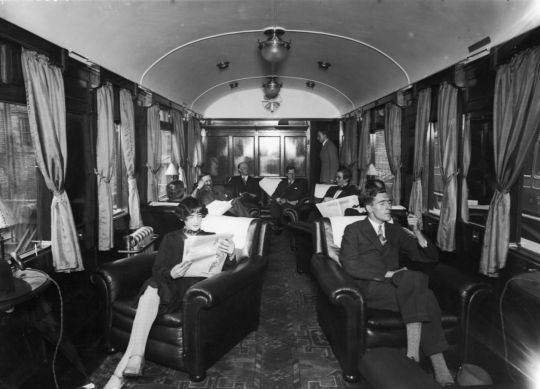
The London Midland and Scottish Railway's Royal Scot First Class Lounge , 1928.
101 notes
·
View notes
Text

War memorial to the staff of the London Midland and Scottish Railway who died in the War
11 notes
·
View notes
Text

Scotland for the Holidays : Edinburgh & the Scotish Borderlands : tourist folder : London MIdland & Scottish Railway : 1928 by mikeyashworth A folder, one in the series issued by the London Midland & Scotish Railway, enticing visitors to holiday in Scotland and use the company's trains whilst doing so. This details the many locations and destinations served by the LMS, even down to the Light Railway that served the upland villages of Leadhills and Wanlockhead as well as the Biggar and Peebles branch that ran down from the West Coast Main Line at Symington. It is fair to say that this guide deals more with the western Borderlands due to the LMS's greater presence on that side of the country! The cover is a fine rendering of Edinburgh's majestic Castle and, like many in the LMS leaflets of the period, signed "N.W.". I'm inclined to think this may be Norman Wilkinson, the artist who was commissioned by many railway companies, although I would be happier if it was signed in full rather than initials.
12 notes
·
View notes
Note
What are Sir Topham Hatt’s (and the engines) opinion on how privatization was handled? When I read about it, I always think how absurd it was to keep the track nationalized, but let other companies run the goods trains, then different run the passenger trains. It is a spaghetti mess. Sodor had the right idea to yoink the old Furness mainline.
Thank you for your ask! (and I'm really sorry for the long wait). This is actually going to be really fun to potentially answer, so let's see...
Officially, the NWR regards privatisation as: "an important milestone in Britain's railway history and the beginning of cooperation between the NWR and our partner railways throughout Great Britain." It's a very prim and proper way of saying "the only thing that changed was the name of the idiot company that keeps delaying our trains." In private however, reactions were very, very different.
For a few engines, it meant very little: Thomas in particular barely cared at all. "What'll change? Not my branchline, that's for sure!" he once snapped at Duck when the Western engine tried to goad him into ranting with him about privatisation. Duncan said something very similar to a visiting diesel, only his version was far too inappropriate to be put in writing. Ever.
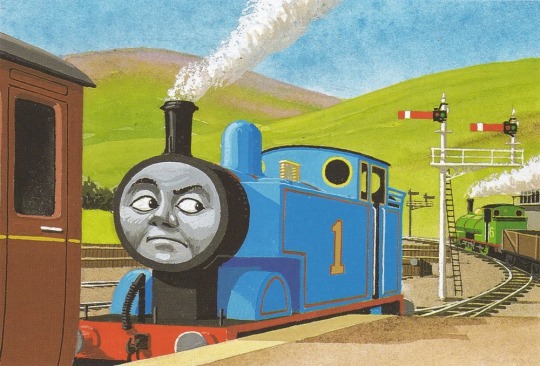
In stark contrast, a lot of the engines had very loud opinions about the entire thing. Duck spent most of one night trying to tell anyone who would listen that it was "disgraceful, disgusting and despicable" that the GWR hadn't been reformed after privatisation. (Henry, James and Gordon had to be physically restrained by BoCo and Bear before they tore Duck a new funnel for stealing their catchphrases). Donald and Douglas both tried to convince the Fat Controller to send them to London to 'politely make a case for a fully independent Scottish network'... multiple times. They also managed to say such inappropriate things that Oliver had to double-head all of Douglas' trains for a month to act as a censor for his language!
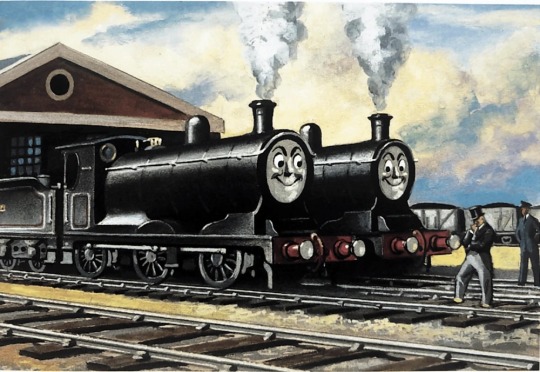
Gordon decided to offer the press his own solution to the privatisation issue, which went something like this: "What we need, is four companies to look after trains in different parts of the country - like we used to." "Like the Big 4?" "Indeed!" "We can't do that, such a system is considered to be a monopoly, and the government won't allow it." "Alright then, how about this: we have one railway that runs in the North and the East... and down to London perhaps. Then we can also have one railway that runs in the Midlands, and in Scotland... and also down to London perhaps, so you have your competition. Then we could have a railway that is in the West, and one in the South-" "Like the Big 4?" "No! These companies would be completely different!" "Look, Gordon, the government has made it very clear that the Big 4 will not return." "Well then FUCK JOHN MAJOR AND ALL THE TORY PARTY! [...] There would be competition anyway, with the roads, don't those blithering idiots understand?! [...] If any of them took a train for once, they'd realise just how bloody stupid the whole thing is, the bunch of------" (About twenty minutes worth of ranting has been omitted, due to various constraints...)
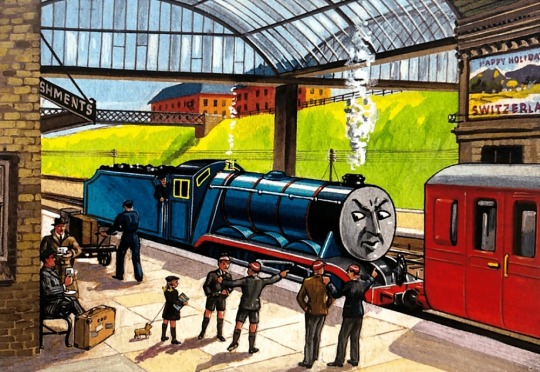
It was no surprise to anyone that Gordon personally campaigned for the Labour Party in 1997.
Meanwhile, behind the scenes, Sir Stephen Hatt and his sister Bridget were frantically pouring over the old charters of the NWR, hoping to be able to keep the new companies off Sodor - and indeed they found they could, as a 1925 Government deal originally intended to keep the NWR independent of the LMS also (entirely by accident) meant that no private, standard-gauge railway company other than the NWR could operate on the Isle of Sodor. Sir Stephen happily shoved that document in parliament's face when they tried to privatise the NWR's various assets, and then got his deal for the Furness Line from a different parliament committee before anyone could cross-reference him. By the time anyone managed to question why exactly they were selling an entirely railway line to a man who had very loudly told them to 'shove off and leave my railway alone', Sir Stephen had already taken control.
Their opinion: "Why treat a railway like its an airline? Honestly, it'll just wind up causing more problems in the end. A railway is a public good - yes, it makes us a lot of money, but we still run it for the people of Sodor, not for - no, we don't know why they divided British Rail like that, it makes no sense to us either - please stop asking more questions before we can finish our thoughts."
Also, a small rather large side note - Britain's railway privatisation is a complex and very unique affair that really showcases how exactly not to privatise a railway network. For example: for around seven years, the railway infrastructure was owned by a private company called RailTrack... which was terrible at doing its job and caused a number of major railway accidents (See Hatfield, 2000; Southall, 1997; Ladbroke Grove, 1999) and then panicked after the Hatfield crash and basically shut the network down, leading to questions over its competence and the finally its re-nationalisation because - surprise surprise - a private company trying to produce profits really shouldn't be in charge of the safety of millions of people with almost no proper accountability. Worse yet, the monopolies that the Tories wanted to avoid by breaking up the system happened anyway - see EWS, which bought up almost all the freight franchises and created a monopoly, only to be bought by Deutsche Bahn, which created an even bigger monopoly as it also owned (at the time) Arriva (they sold Arriva in 2024). To worsen the spaghetti, the system was divided into three basic sections: the infrastructure (RailTrack), Train Operating Companies (who owned the trains) and Franchises (who ran the trains and hired staff). In other words: a ticket in the UK is so expensive because you are paying for: the train crew, renting the train, renting the track, renting the platforms and producing profits for shareholders.
Oh, and suddenly freight and passenger trains owned by different companies are all competing to have priority at every. single. signalbox. in the country.
Now, I am not an expert in fixing extremely broken railway systems, but even still, I feel like I could probably do better than this mess!
Thank you for reading!
#weirdowithaquill#thomas the tank engine#railways#railway series#real life railways too#ask answered#ask me anything#british railways#british rail#privatisation of british rail#ttte thomas#ttte duncan#ttte donald#ttte douglas#ttte gordon#ttte duck
20 notes
·
View notes
